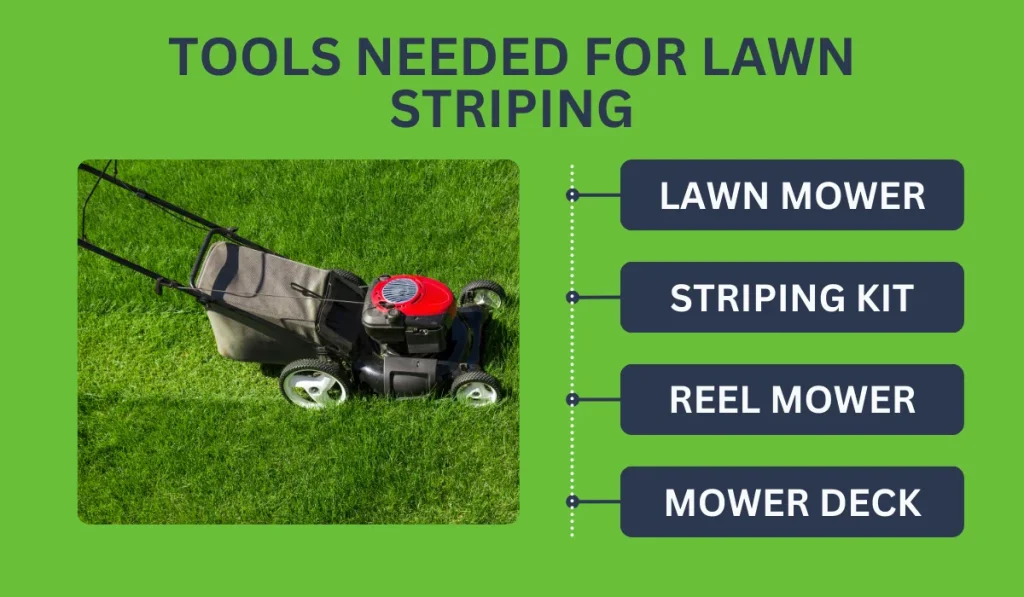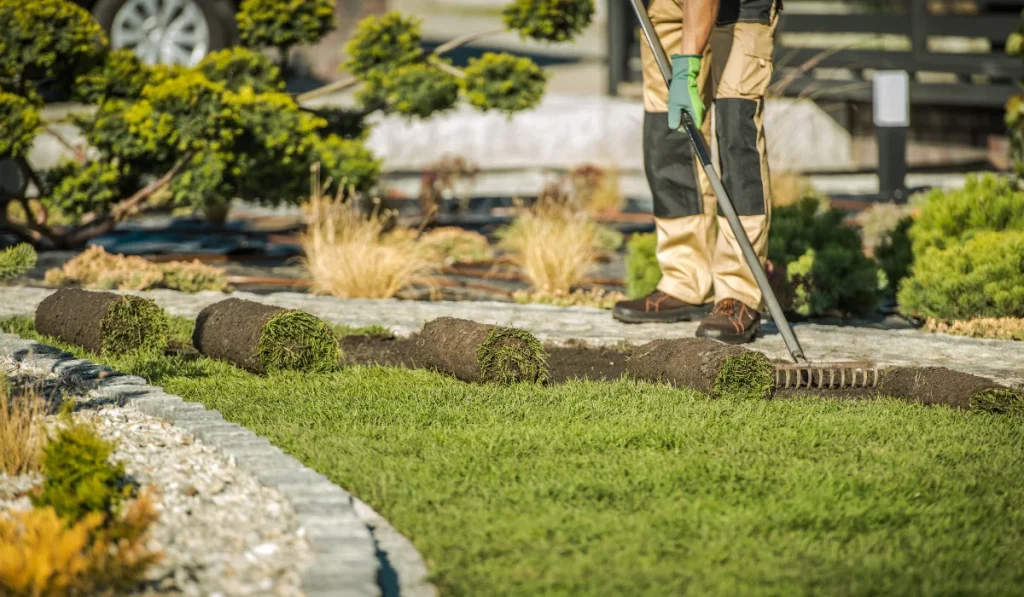Ever walked past a perfectly striped lawn and wondered how they did it? Striking those neat, professional stripes in your lawn is easier than you might think.
With some basic tools and a bit of patience, anyone can achieve that golf course look right at home.
Stick around to learn the step-by-step process for keeping those stripes looking sharp all season long.
Key Takeaways
- Lawn striping requires understanding how to bend grass blades using the right tools and ensuring the lawn is well-prepared and maintained.
- Cool-season grasses like Fescue, Kentucky Bluegrass, and Ryegrass are ideal for their growth patterns and blade structures.
- Regular lawn care, including maintaining sharp mower blades, proper mowing height, and overseeding, is crucial for lasting and pronounced striping effects.
What to Know Before You Start
Creating mowing stripes on your lawn for the first time involves understanding the technique of bending grass, choosing the right type of grass, and having the necessary tools ready.
Understanding How Grass Bending Works
Lawn striping works by bending the grass blades in different directions, which reflects sunlight differently depending on the angle.
This contrast makes the stripes visible. Knowing how the bending action produces this effect is essential to achieving well-defined stripes.
Best Types of Grass for Striping
Not all grass types are equally suitable for striping. Cool-season grasses tend to stripe better than warm-season grasses due to their growth patterns and blade structure.
Here are the best grass types for striping:
| Grass Type | Suitable Season | Characteristics |
|---|---|---|
| Fescue | Cool-season | Thick, lush growth, stripes well |
| Kentucky Bluegrass | Cool-season | Dense, fine-textured blades, easy to stripe |
| Ryegrass | Cool-season | Quick establishment, bright green color |
| Bermudagrass | Warm-season | Fine blades, requires frequent mowing |
| St. Augustine | Warm-season | Broad blades, slower growth |
Tools Needed for Lawn Striping

To achieve well-defined lawn stripes, having the right tools is crucial. While a standard lawn mower can be used, additional tools can enhance the results significantly.
Here’s what you’ll need:
- Lawn Mower
- Striping Kit
- Reel Mower
- Mower Deck
Step-by-Step Guide to Striping Your Lawn
Striping a lawn involves careful preparation and specific mowing techniques to achieve those eye-catching patterns.
Lawn Preparation
Before beginning with your first mow on the blades of grass, it’s essential to prepare the lawn. Essential preparations include:
- Mower Maintenance: Ensure mower blades are sharp and in good condition.
- Lawn Health: Water and fertilize your lawn at least a week before striping.
- Obstacle Removal: Clear any debris, toys, or objects on the lawn.
Mowing Techniques for Different Stripe Patterns
After preparing your lawn, you can now mow your first stripe. Start by mowing a straight stripe from one end of the lawn to the other. Use a focal point in the distance to help maintain a straight line. Return in the opposite direction for the next stripe.
Creating different lawn striping patterns requires specific mowing techniques. Popular patterns and techniques include:
| Lawn Striping Pattern | How To Do It |
|---|---|
| Straight Lines | Mow in parallel lines, turning at the end of each row. |
| Checkerboard Pattern | First, make straight lines; then, repeat perpendicular to the first set. |
| Diagonal Stripes | Follow the same method as straight lines, but at a 45-degree angle to the lawn edge. |
Finishing Touches
After striping, finishing touches enhance the lawn’s appearance. These final touches include:
- Edge Trimming: Clean the borders with a string trimmer, including any curves around flower beds.
- Smoothing Ruts: Flatten any ruts or uneven areas created by the mower.
- Overseeding (If Necessary): Fill in bare spots by overseeding for a consistent lush look.
Tips and Tricks for Perfect Stripes
Perfecting the stripe effect while landscaping involves strategic mowing patterns, additional tools, and consistent lawn maintenance. These elements can help homeowners like you achieve that professional, well-manicured appearance.
Adjust Mowing Patterns
Adjusting mowing patterns is essential for getting crisp, defined stripes. Consider these adjustments:
| Adjustments | Description |
|---|---|
| Change Directions | Alternate mowing directions with each session to avoid grass-leaning. |
| Vary Angles | Try different mowing angles, such as diagonal stripes. |
| Keep Consistent Lengths | Maintain the same mowing height for even grass health. |
Consider a Lawn Striping Kit
A striping kit can significantly enhance the visual appeal. These kits attach to lawn mowers and bend the grass to create more pronounced stripes.
Choosing the right striping kit requires understanding your lawn mower type and the effect you want to achieve. They can add a professional touch to your mowing efforts.
Maintain for Lasting Stripes
Proper maintenance is vital to keeping the stripes looking good. This includes:
- Sharp Blades: Keep blades sharp to avoid tearing the grass.
- Mowing Height: Adjust the height based on the grass type for the best results.
- Lawn Care: Regularly fertilize and overseed with suitable grass seed for healthier growth.
When to Call a Professional to Stripe Your Lawn
While you don’t necessarily need to call a professional to stripe your lawn, there are a few situations where it might be a better option for lawn care.
Large or Complex Lawn
If your lawn is large or has a complicated layout, calling a professional might be the best option. Much like those on stadiums, baseball fields, or golf courses, stripes on big lawns require precision and skill.
A complex lawn with curves and difficult angles can challenge DIY enthusiasts.
Time Constraints
Maintaining a striped lawn can be time-consuming. If you have a busy schedule, a professional service may be the solution you need.
Limited Mobility or Health Concerns
For those with limited mobility or health concerns, striping a lawn can be physically demanding. It requires pushing a mower in straight lines or specific patterns, which can be strenuous.



